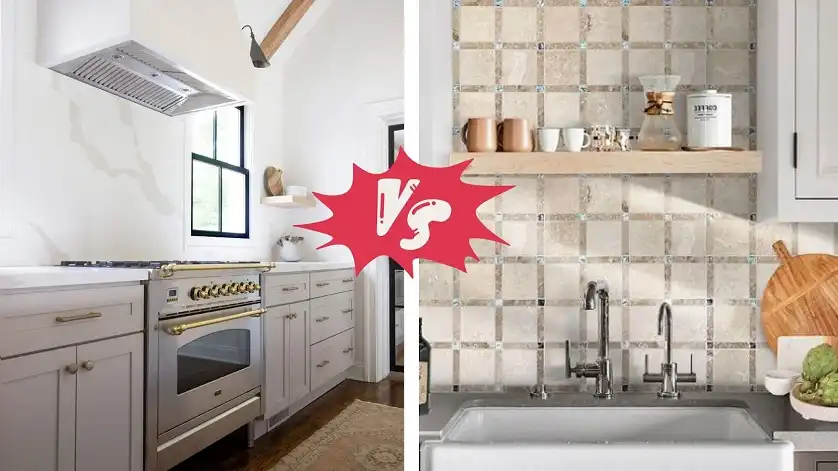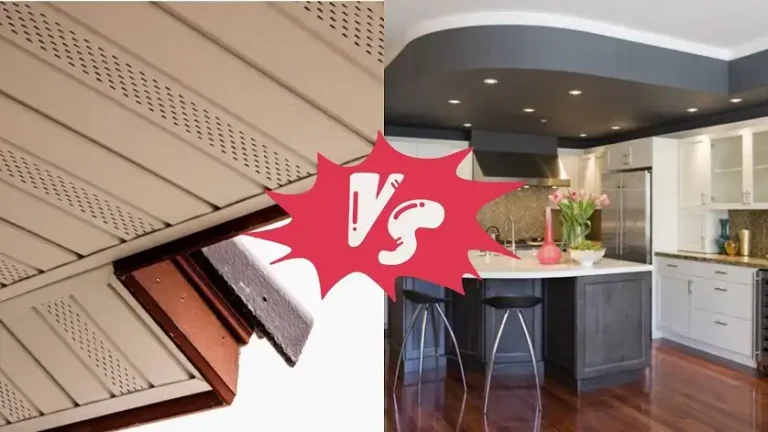Quartz Backsplash vs Tile Cost: Which Option Offers Better Value?

When it comes to choosing a backsplash for your kitchen, the materials you select play a crucial role in both the overall look and functionality of the space. One of the biggest decisions homeowners face is whether to go with quartz or tile. But how do the costs compare? The simple answer is that quartz is generally more expensive than tile, but each material comes with its own set of benefits that could make it worth the investment depending on your needs. Let’s break down everything you need to know about quartz vs. tile backsplash cost to help you make an informed decision.
How Much Do Quartz and Tile Cost?
Cost is often the first thing we consider when making home improvement decisions, and for good reason. A backsplash is both a functional and aesthetic element, and its price can vary quite a bit depending on the material you choose. Let’s compare quartz and tile based on installation costs, material prices, and long-term value.
Average Cost per Square Foot
For quartz backsplashes, expect to pay anywhere from $30 to $150 per square foot, depending on the brand, design, and quality of the quartz. One of the nice things about quartz is that it can be more affordable when used for backsplashes than for countertops. However, the cost can add up quickly when you consider the material, size, and any customizations you choose.
In contrast, tile prices vary widely. Basic ceramic tiles can be as cheap as $1 to $5 per square foot, making them an affordable option for many homeowners. However, higher-end materials, such as porcelain, glass, or natural stone tiles, can cost $10 to $30 per square foot. For example, installing 30 square feet of tile might cost around $600 for basic ceramic, but high-end tile can easily surpass the price of quartz. It’s important to consider the variety of tile options out there, as the price range can be pretty broad.
Labor Costs
Labor costs are another consideration, especially when it comes to installation. Generally, tile installation is more labor-intensive and can be more expensive. While DIY enthusiasts might find success with tile, laying tile properly—especially with intricate patterns or natural stone—requires precision. For those who hire a professional, expect to pay anywhere from $4 to $10 per square foot for tile installation, with rates climbing for more complex jobs. The labor for tile tends to be higher due to the time required for cutting, laying, and grouting.
On the other hand, quartz slabs are heavy and often need specialized installation. This means that quartz tends to have slightly lower labor costs than tile in some cases, but it also depends on the complexity of the project. Quartz installation typically costs $5 to $10 per square foot. The tricky part comes when you need custom cuts for outlets or edges. If you’re looking for a clean, seamless look, that can sometimes come at a premium.
Quartz Backsplash vs Tile: Durability and Longevity
You’re not just paying for a backsplash material in the here and now—you’re investing in something that should last for years to come. So, what makes quartz and tile stand out in terms of durability?
Quartz
Quartz is incredibly durable and has a solid reputation for being resistant to scratches, chips, and stains. Since it’s non-porous, you won’t need to worry about sealing it—something that tile backsplashes, especially natural stone, demand. You’ll find quartz to be a low-maintenance option that stays pristine with just a little soap and water.
Tile
Tile is also durable but not invincible. While it can withstand heat and moisture, it can chip or crack if something heavy is dropped on it. The real challenge with tile is the grout. Over time, grout can discolor or stain, and it may need to be resealed every couple of years to prevent water damage or mold growth. So, while tile can last a long time, the maintenance of grout lines is something to factor into the overall cost equation.
Which One Will Last Longer?
In terms of sheer durability, quartz is probably the better long-term investment. It requires less upkeep and tends to stay in great condition for longer periods. Tile, though, can still be a good investment, especially if you go for high-quality materials, but the grout maintenance and potential for cracking might push it down the list if you’re looking for something super low-maintenance.
Quartz Backsplash vs Tile: Maintenance Requirements
Let’s be honest: Nobody wants to spend hours cleaning a backsplash. Luckily, both quartz and tile can be fairly easy to maintain—if you take care of them.
Quartz: Low-Maintenance
One of the major benefits of quartz is that it requires very little upkeep. Cleaning with a damp cloth and soap is usually enough to keep it looking shiny. No sealing is required, which means no extra cost or hassle down the line. Quartz doesn’t absorb liquids or stain easily, so it’s one less thing to worry about in the hustle and bustle of daily life.
Tile: A Little More Work
Tile backsplashes require a little more elbow grease. While the tiles themselves are pretty easy to clean, grout needs regular sealing and occasional cleaning to prevent stains. Grout lines can also collect dirt over time, especially in high-moisture areas like kitchens. With that being said, tile offers more design flexibility, and the maintenance may be worth it if you love a custom look.
Aesthetic Appeal: Which Material Fits Your Style?
When it comes to aesthetics, both quartz and tile offer diverse looks that can complement nearly any kitchen style, from modern to rustic.
Quartz: Sleek and Seamless
Quartz provides a clean, seamless look that’s both modern and sophisticated. The variety of colors and patterns available in quartz is vast—ranging from simple whites and creams to rich veining that mimics marble. It’s an excellent choice if you want a sleek, polished finish without the grout lines.
Tile: More Flexibility
Tile, on the other hand, offers more flexibility. Whether you’re into classic subway tiles or want to play with bold patterns like herringbone, tile can match almost any design vision. You can choose from ceramic, porcelain, glass, and natural stone, giving you a broad range of textures and colors. If you’re drawn to a more textured or rustic look, natural stone tiles, like travertine or slate, can bring a lot of character to your space.
Which One Is Right for You?
If you’re after a seamless, sleek appearance, quartz is hard to beat. However, if you’re looking for a material that allows for creative expression and offers a variety of patterns and textures, tile may be your best bet.
Wrapping Things Up
Choosing between quartz and tile for your kitchen backsplash ultimately comes down to a balance of cost, design, durability, and maintenance. Quartz is generally more expensive upfront but offers a sleek, low-maintenance option that will last for years. Tile, while cheaper in some cases, may require more upkeep, especially in the form of grout maintenance.
To make the right decision, consider what matters most to you—whether that’s cost, ease of care, or design flexibility. The right choice will depend on your personal style, kitchen needs, and budget.
FAQ
Is quartz or tile cheaper for a kitchen backsplash?
Tile is generally cheaper than quartz, especially if you choose ceramic or porcelain. However, high-end tile options can be just as expensive as quartz.
How much does it cost to install a quartz backsplash?
Quartz backsplash installation typically ranges from $5 to $10 per square foot, with some jobs costing more depending on customization.
Are quartz backsplashes durable?
Yes, quartz is highly durable and resistant to scratches, chips, and stains. It’s also non-porous, so it doesn’t require sealing like tile.
Which tiles are most affordable for backsplashes?
Ceramic and porcelain tiles are the most affordable options for backsplashes, with prices ranging from $1 to $5 per square foot.
How often does tile grout need to be resealed?
Tile grout should be resealed every 1 to 2 years to maintain its resistance to water and stains.
Can I install a tile backsplash myself?
Yes, tile installation is DIY-friendly, although it can be time-consuming and requires a bit of patience.






